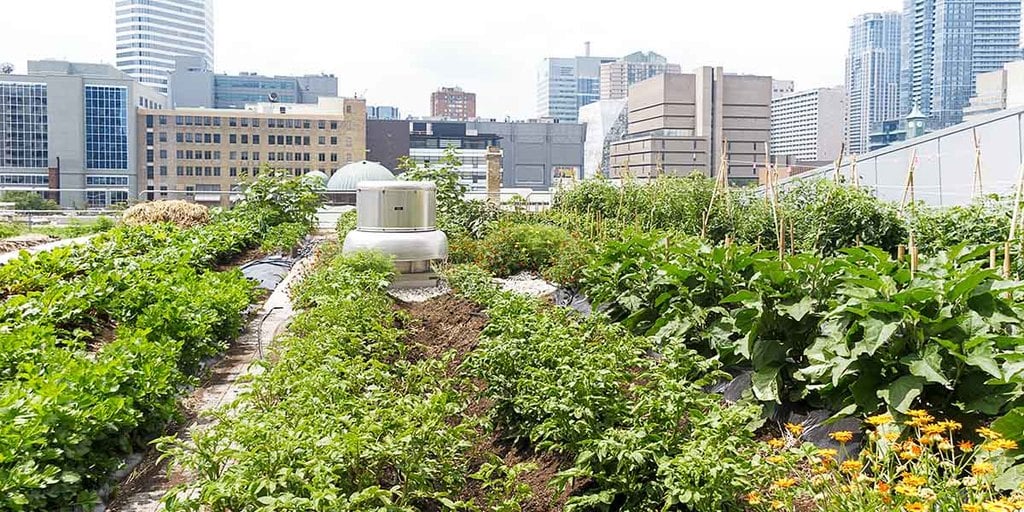Getting My City Blooming To Work
Getting My City Blooming To Work
Blog Article
Some Known Details About City Blooming
Table of ContentsExcitement About City BloomingSome Known Incorrect Statements About City Blooming Some Known Questions About City Blooming.City Blooming Can Be Fun For AnyoneThe Only Guide to City Blooming
Intrigued in expanding food for sale in the City of Chicago? Below is a listing of frequently asked inquiries pertaining to the guidelines and laws that cultivators should take into consideration when preparing a city farming project.
The zoning change does not change any other codes managing composting, structure permits, buying or leasing City possessed home, organization licenses or environmental contamination. There are existing codes that manage these concerns and they stay completely result and may apply to your job. Area yards are commonly owned or managed by public entities, civic companies or community-based companies and maintained by volunteers.
Urban ranches grow food that is meant to be marketed, either on a nonprofit or for-profit basis. Due to their commercial purpose, urban farms need an organization license.
Not known Factual Statements About City Blooming
Composting is enabled yet just for plant material that is generated and utilized on website. The quantity of compost material can not go beyond 25 cubic yards at any kind of provided time according to the criteria in 7-28-715 of the City's Municipal Code. Yes. Due to the fact that the dirt at a lot of brand-new garden sites needs changing, compost, dirt, wood chips, or various other products can be gotten to build or enhance the expanding space - sustainable gardening.

If a building authorization is required after that the hoophouse will be considered an accessory structure. You can figure out more about the building permit demands by getting in touch with the Department of Buildings. The 25,000-square-foot dimension limitation is planned to prevent a solitary community garden from controling a given block or taking away from the block's existing property or industrial character.
The limitation does not apply to gardens found in Public Open Space (POS) areas. Can there be more than one community garden that is 25,000 square feet on a solitary block? Fencing is not required, nonetheless, gardens that have huge auto parking areas may be called why not try this out for to set up fencing or other landscape design features.
What Does City Blooming Mean?
B1 & B2 areas require that all commercial usage tasks be carried out inside. R districts restrict business activity. The guidelines mirror the function and intent of the Zoning Code. Is secure fencing required for metropolitan farms? Yes. Fences might be required, along with landscaping and testing, for sure auto parking areas and outside job or storage locations relying on area and the specific task occurring.
Yes. Urban ranches call for building authorizations and zoning approvals before construction. Other kinds of city evaluation might be needed relying on specific frameworks, tasks, size, landscape design, licensing, public heath and stormwater monitoring problems. A number of these requirements are identified in the project style or permitting process, however, the applicant might be responsible to separately identify specific licenses or allows that might be required.
The Department of Organization Affairs and Consumer Protection can assist identify the particular kind of company license that's called for. Off road car parking is needed for a lot of business tasks in Chicago. The needed number of auto parking areas is based on the number of workers working on website and not the square video of the expanding area.
The Definitive Guide to City Blooming

Yes. A city farm can offer compost product produced on site, nevertheless, the procedure should follow the regulations in 7-28-715 of the Chicago Municipal Code. Yes. Aquaponic systems are enabled inside on urban farms in lots of zoning districts. A zoning review and building authorization is required in order to mount structures or systems and an organization certificate is required as explained above.
Approximately five hives or nests of honey bees might be maintained as an accessory usage. Beekeepers need to register with the Illinois Department of Agriculture. For even more details regarding the proposed zoning amendment you may speak to the Division of Real Estate and Economic Development, Bureau of Planning and Zoning at 312.744.8563.
Farming in cities and metropolitan areas A metropolitan farm in Chicago. Urban agriculture describes various techniques of growing. https://www.gaiaonline.com/profiles/cityblooming/46731693/, handling, and dispersing food in urban locations. The term also puts on the area tasks of pet husbandry, aquaculture, beekeeping, and horticulture in a city context. Urban farming is distinguished from peri-urban farming, which takes area in country areas at the side of suburbs.
The Best Strategy To Use For City Blooming
It can involve a movement of organic growers, "foodies" and "locavores", who seek to develop social media networks founded on a shared principles of nature and neighborhood holism. These networks can create using official institutional support, ending up being integrated right into neighborhood community planning as a "change community" activity for lasting city development.
The extra straight accessibility to fresh vegetable, fruit, and meat products that may be understood via city agriculture can boost food security and food safety while reducing food miles, leading to reduced greenhouse gas exhausts, consequently adding to climate adjustment mitigation. A few of the initial evidence of urban agriculture comes from Mesopotamia.
Report this page